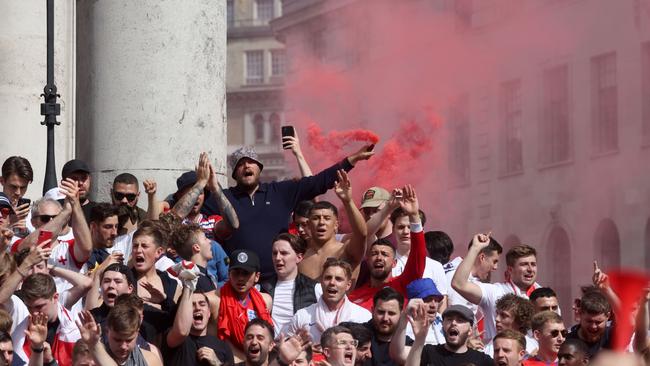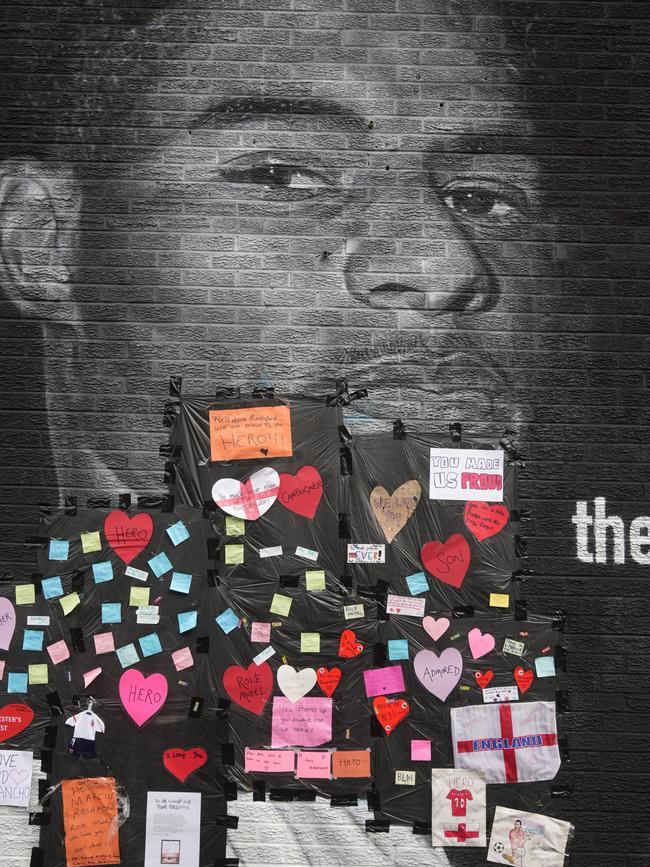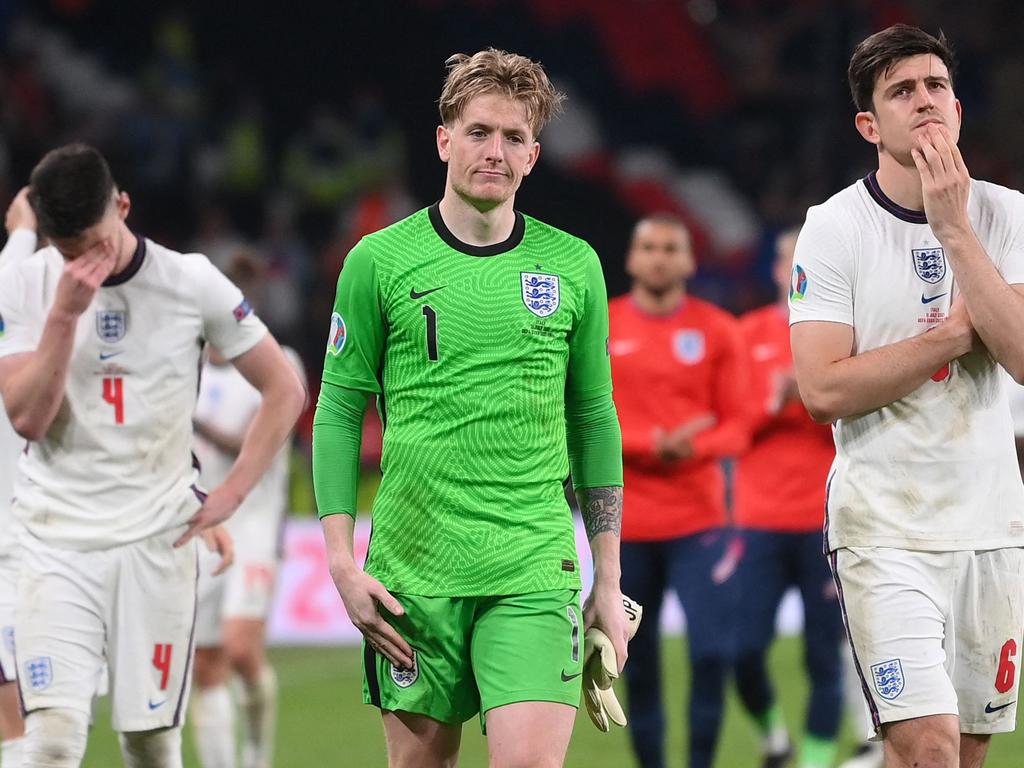How social media warps our perspective


There was a lot of footage floating around online on Sunday. There was also, for example, the completely naked man standing on a car outside a Wembley PC World, wobbling his really quite small willy around. That one has been seen by 3.6 million people which, for context, is about ten times as many people as would have seen it if he’d whipped it out on Newsnight. Imagine him waking up yesterday morning. That nagging feeling that he might have done something regrettable. He yawns, he rolls over. He reaches for his phone.

Post-match, black players were targeted on social media, and in Manchester a billboard of Marcus Rashford was vandalised. Racism was so rife, indeed, that the cabinet were almost as upset about it as they had been about players beforehand protesting against it.
Perhaps you also saw clips of the small crowd fighting their way into Wembley, and the scuffle after the match inside the stadium’s foyer, with angry men in shorts trading punches and kicks and a guy in a hoodie being dragged along the floor. You could feel your adrenaline rising just watching it. “Yeah cool country, mate,” tweeted the New Zealander actor/director Taika Waititi, in disgust.
Yeah cool country, mate. https://t.co/UoXsiDQDWr
— Taika Waititi (@TaikaWaititi) July 11, 2021
Ah, the shame. Even I felt it. And I’m Scottish, and only live here.
And yet, cast your mind back to that last great summer of English football in 1996. Or rather, study the archives, because your mind is probably no use at all. The night after England lost to Germany in the semi-finals, 40 people were arrested in Trafalgar Square alone, after an actual riot. Across London, there were 200 arrests, which is four times more than this weekend. German cars were vandalised nationwide. In Birmingham, fans smashed up an Aldi. Two Germans were beaten up in Basingstoke. In Sussex, a Russian teenager was stabbed five times after a gang misplaced his accent. In Brighton, seven fans were so distraught they threw themselves off the pier, like pissed lemmings, and had to be rescued by the coastguard.
I mention all this not to make a trite case that some football fans used to be even worse than they are now, because I expect you knew that already. My point, rather, is about the popular attitude then (a weary shrug, followed by immediately forgetting), compared with the horror and fury of today.

To understand what has changed, I refer you to what may feel like the very different story of Nextdoor, a wildly popular app designed to let people communicate with their neighbours. It has millions of users, and claims to be in one in three American households, and last week it announced plans to float. And yet it has one big problem in common with all neighbourhood apps, which is a marked, if anecdotal, tendency to terrify people. You think you live somewhere cosy and safe, but then you log on and you are plunged into a world of smashed car windows, local burglaries and grainy photos of people lurking in front gardens who might want to steal your Amazon packages. The more you know, the more you fear. “Hey, look out your window, most things are fine!” is a message that almost nobody ever sends or sees. Much like the way you are unlikely to get 3.6 million views for a video of a sober football fan standing in Leicester Square, not showing his willy at all.

As humans, we are very bad at perspective. We are very bad, particularly, at comprehending the statistical insignificance of whatever it is that happens to upset, outrage or infuriate us today, in the context of everything else that does not. We have always had this flaw, but social media hacks it, mercilessly. It should not matter to us that an influencer has a car or a body that we do not, nor should it pain us overwhelmingly that a person we have never heard of has said a nasty thing about a person we have never met. And yet, it does. We have lost all power to make it not.
Flaw or not, our restless, relentless responding to things can be morally unassailable, because of course our sporting heroes deserve far, far better than the treatment they have had over the past few days. I mean, don’t they? Who could possibly suggest otherwise? Fighting this battle, though, also seems to profess faith in some obviously unattainable future in which not even an infinitesimally tiny fraction of humanity will send racist abuse, and not one nasty bastard in Manchester will own a spray can. It makes us feel and act as though the world grows ever worse, even while we know it to be far more likely that the opposite is true. It is a compulsive mania, and I say that despite sharing it. Which is a complicated way to feel.
Another compulsive mania, obviously, exists in the neurotic tilt against what I suppose we must now call “wokeism”, by people who genuinely seem to fear that the Black Panthers and the Baader-Meinhof Gang are about to burst in and force them to take the knee in their own kitchen. And they are triggered, these manias, ten times a day, and a hundred times on a day as tense as Sunday was, and back in 1996 they just weren’t. Once, I suppose my point is, neither you nor I would have to care that a madman in Leicester Square had had a flare in his bottom at all. And God, but wasn’t that an easier way to live?
The Times






You might call it the face of England, but it wasn’t a face. It was a human bottom, with a smoking red flare stuck up it, outside the Odeon Leicester Square. “At last, a new Pope,” said one wag on Twitter. Almost everybody in the shot was wearing an England shirt, except for one man in a flag cape who was (quite gingerly) giving the aforementioned bottom a smack. Until then, should England have won, I had been thinking of taking my kids for a historic midnight drive around town, on the basis that it might feel like a Brazilian carnival. “Or not,” I thought.